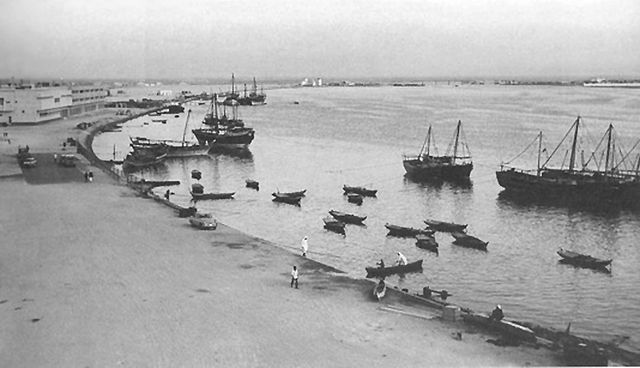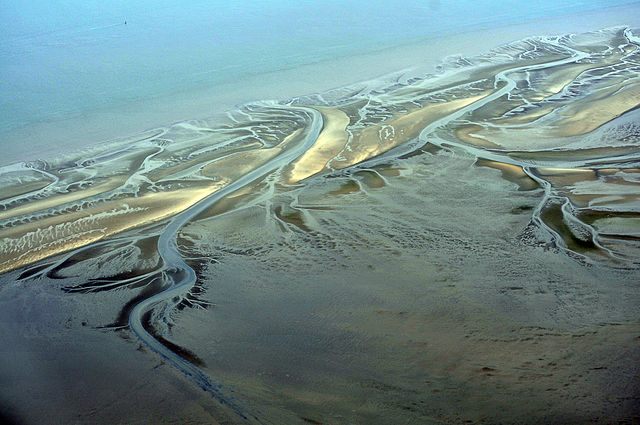Dubai Creek has been described as a natural saltwater creek, tidal inlet, and watercourse or waterway in Dubai, United Arab Emirates (UAE). It extends about 9 miles (14 km) inwards and forms a natural port that has traditionally been used for trade and transport. The creek ranges from 200 to 1,200 metres in width while the average depth is about 6.5 to 7 metres. Previously, it extended to Ras Al Khor Wildlife Sanctuary but as part of the new Business Bay Canal and Dubai Canal, it extends a further 13 km (8.1 mi) to the Persian Gulf.
Abras (water taxis) on Dubai Creek
Dubai Creek in 1964
Dubai Creek in 2007
NBD headquarters along the Dubai Creek
A tidal creek or tidal channel is a narrow inlet or estuary that is affected by the ebb and flow of ocean tides. Thus, it has variable salinity and electrical conductivity over the tidal cycle, and flushes salts from inland soils. Tidal creeks are characterized by slow water velocity, resulting in buildup of fine, organic sediment in wetlands. Creeks may often be a dry to muddy channel with little or no flow at low tide, but with significant depth of water at high tide. Due to the temporal variability of water quality parameters within the tidally influenced zone, there are unique biota associated with tidal creeks which are often specialised to such zones. Nutrients and organic matter are delivered downstream to habitats normally lacking these, while the creeks also provide access to inland habitat for salt-water organisms.
Aerial photo of North Sea, tidal channels between the islands of Nigehörn (left) and Scharhörn (right)
Aerial photo of North Sea, tidal inlets from the Wadden Sea on Scharhörn






